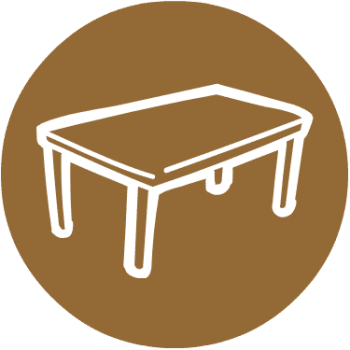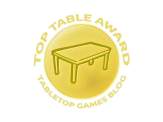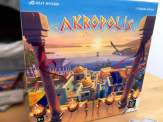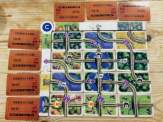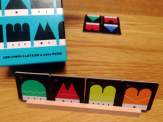| Release Date: 2024 | Players: 2-4 |
| Designer: Charles Chevallier | Length: 45-60 minutes |
| Artist: Xavier Gueniffey Durin | Age: 10+ |
| Publisher: Gigamic | Complexity: 2.5 / 5 |
| Plastic (by weight): <1% | Air (by volume): 25% |
Our longships were ready to sail. The crew had just completed stowing all provisions and supplies for the long voyage ahead. We needed resources and building materials to develop our fjord and complete our port, altar and Jarl palace. But we were not alone. Vikings from other fjords had the same ambition to store up the most riches and be crowned Jarl of the Vikings! It was a race, but we were ready! We were ready to Looot by Charles Chevallier and Laurent Escoffier from Gigamic.
Listen to the Audio Version
Intro Music: Bomber (Sting) by Riot (https://www.
Royalty Free Music: https://www.
License code: SAJRFKWQSP8U6FLP
Liberty Quest by Sascha Ende
Free download: https://filmmusic.
License (CC BY 4.0): https://filmmusic.
“Not another Viking game,” I hear you shout. “Not another tile-laying game,” I hear you lament. “No more,” I hear you declare. And of course, you’d be right. Looot is another Viking-themed game, following in the long line of Knarr, Odin and many others. It is another game where you strategically place hex tiles to complete patterns and score the most points, just like Applejack, Akropolis and such like. Yet, Looot has at least one really important twist – the way you get the hex tiles that you place on your player board. And it’s that twist that drew my attention to this game in the first place.
Loooting and Pillaging
Our longships have landed on foreign shores. Our Viking crew has gone ashore to loot and pillage for wood, sheep, gold and even axes. Actually, the axes represent us defeating local armies. Axes also represent honour, which can earn you a good extra chunk of victory points.
However, we’re not only there to steal resources from the lands and attack the locals, we also take whole buildings back with us: houses, watchtowers and even whole castles. Now, I don’t think the game is suggesting we’re actually dismantling a whole castle stone by stone, shipping everything back to our fjord and rebuilding it there, like a Viking-age Robert P. McCulloch. I think it’s more like these buildings are another set of resources we can use to build similar structures back home.
Anyway, it’s not really these resources or how you place their related hex tiles onto your fjord player board that makes Looot different from all of the other tile-laying games of its ilk that I have previously played. It’s how you get these resources that is so very different. Rather than choosing from a stack of tiles, an offer row or similar, what resources you get depends on where you place your Viking meeple on the modular game board, that represents the foreign lands you’re looting.
You can only ever place a Viking next to a longship, five of which are lined up along a short stretch of shoreline, or next to another Viking – either your own or another player’s. So, together with everyone else, you’re invading the lands starting from the sea and slowly making your way inwards. While there are always a lot of options, what resources you can get is dependent on where your or other players’ Vikings are placed on the map.
Area Control and Racing
The basic resources, wood, sheep, gold and axes, are gained by placing your Viking meeple on a relevant hex, but the buildings work differently. You can’t place your Vikings on them, but it depends on what meeples are adjacent to them. For a house, you simply need to put one of your Vikings next to it. You get watchtowers by having a continuous chain of your meeples between two of them. Castles require an uninterrupted line of four, eight or twelve meeples.
So there is a sort of area control element in Looot as well, at least when it comes to claiming watchtowers or castles. If you can interrupt another player’s chain of Viking meeples, you can stop them from getting one of those buildings.
Not only that, buildings are limited, with two of each on specific hexes, except for castles that have three in certain locations. Once both houses or watchtowers or all three castles are gone from a hex, you can’t get any more. So there is a certain race element in Looot as well. You have to be quick to get the buildings you need.
I think the idea that you don’t just take a tile from a stack or an offer row or similar, like you do in many other tile-laying games, but instead, you place a worker, is wonderful. It’s one of the two core mechanisms in Looot that creates a really interesting puzzle.
You usually are able to get the resources you need, but you also need to plan ahead a little. In fact, as you get better at the game, you can potentially lock other players out of the resources they need, even though I’d say most of the time you’re too focused on your own fjord to have time to think about other players’.
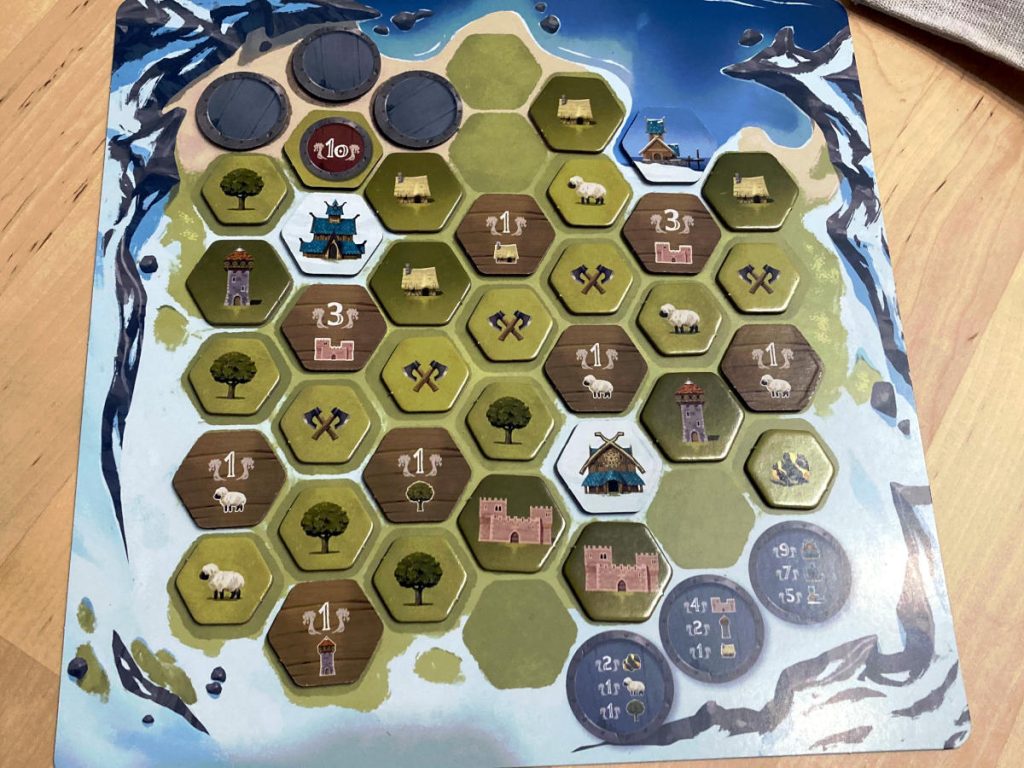
Tile-Laying Puzzle
The other big part of Looot is your own player board, your fjord. You start with three hex tiles that represent your port, altar and Jarl palace that you need to build. Each hex requires a certain number and type of resources. As you place your Viking meeples on the shared game board and take the relevant resources, you place them anywhere in your fjord. If you can place the required resources around the starting hex tiles, you are able to complete them to score points.
Each type of resource also scores a certain number of points, just by having it in your fjord.
Additionally, you can claim a trophy token, based on the number of axes you have in your fjord, for extra points. However, you can only claim a single trophy token in the whole game. So wait until you have enough axes to get more points.
However, where Looot really comes to life is the longships. They aren’t merely the starting point for the Viking invasion, but they also represent bonus points. You can take one of these on your turn and place it anywhere in your fjord. Each longship requires a certain number and type of resources, just like your starting buildings.
Once you have completed them, you flip them over and they give you bonus points for the resources or buildings that you add to your fjord. So instead of scoring only one point per sheep, you may score an additional two. Suddenly you score three points for every sheep in your fjord. However, any longships you haven’t completed by the end of the game are negative points. So be sure to only take a longship when you’re confident that you can complete it.
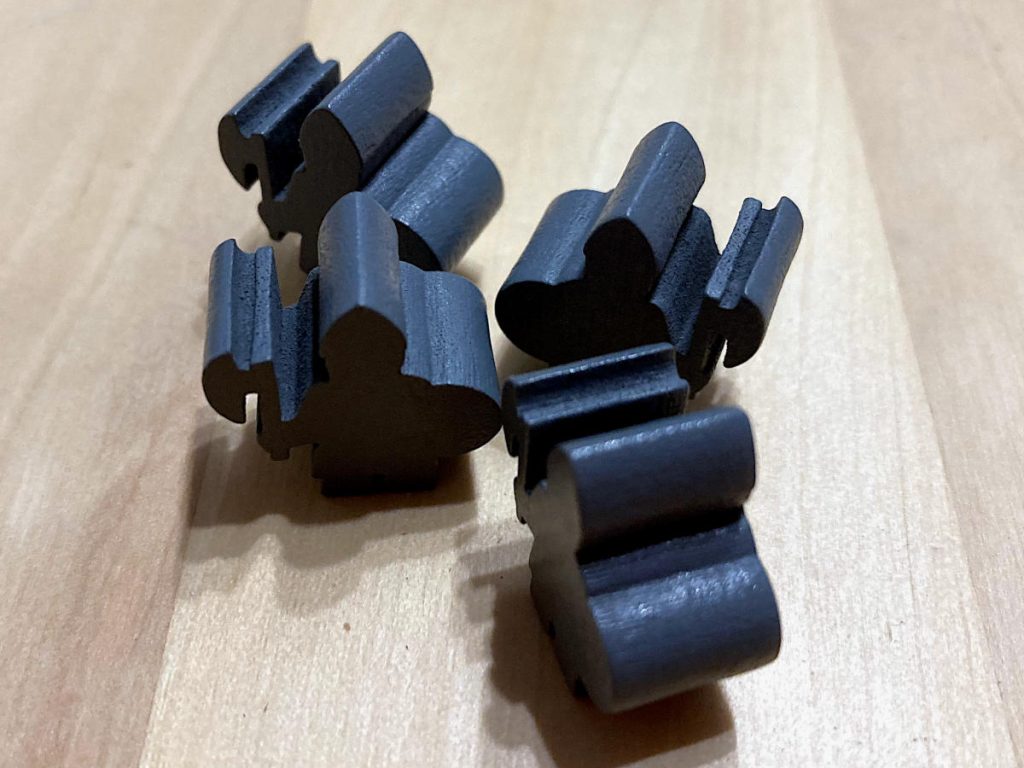
Point Salad
Looot is a real point salad of a game. If you’re smart and cleverly place your hex tile resources, buildings and longships, you can score really highly. Yet, that’s the tricky bit. It’s easy to place a resource tile so that it’s impossible for you to complete your longships or buildings. Looting yourself into a corner is really easy to do and you would loudly curse yourself many times.
However, the more you play Looot, the better you will get at solving this constantly evolving puzzle. Your brain might hurt a little, but if you can stay focused, you’ll succeed. That’s what I meant earlier about not really having time to worry about other players. You need to remember what resources you need to place where to complete the two longships that aren’t finished yet. That’s going to take enough brain power as it is.
So Looot is a game of two halves – but those halves work beautifully together and make a seamless whole. You need to plan where you want to put your Viking meeples so that you get the resources you need. You also need to choose longships and place them in the most effective locations to give you the bonus points you need to win and become the Jarl of the Vikings.
I think you can tell that I’m in love with Looot. Not only are its mechanisms right up might fjord, but the product quality is also amazing. Thick cardboard tiles that will last a lifetime and cute, custom wooden Viking meeples that are a joy to place. There is also a lovely cloth bag for the longship tiles. Looot is absolutely the whole package.
This blog is free for everyone, but if you'd like to support it, here are some options.
Useful Links
- Looot: https://en.
gigamic. com/ accueil-fr/ 1136-looot. html - Rulebook: https://en.
gigamic. com/ index. php? controller= attachment& amp;id_ attachment= 488 - Gigamic: https://en.
gigamic. com/ - BGG listing: https://boardgamegeek.
com/ boardgame/ 410991/ looot - Knarr review: https://tabletopgamesblog.
com/ 2024/ 07/ 20/ knarr-saturday-review/ - Odin review: https://tabletopgamesblog.
com/ 2024/ 03/ 30/ odin-saturday-review/ - Applejack review: https://tabletopgamesblog.
com/ 2023/ 09/ 30/ applejack-saturday-review/ - Akropolis review: https://tabletopgamesblog.
com/ 2023/ 09/ 09/ akropolis-saturday-review/
Videos
Transparency Facts
I feel that this review reflects my own, independent and honest opinion, but the facts below allow you to decide whether you think that I was influenced in any way. Please also read my Ethics Statement for more information.- I was given a free review copy of this game by the publisher.
- At the time of writing, I have not received financial support from the publisher or anyone working on their behalf.
Audio Version
Intro Music: Bomber (Sting) by Riot (https://www.
Royalty Free Music: https://www.
License code: SAJRFKWQSP8U6FLP
Liberty Quest by Sascha Ende
Free download: https://filmmusic.
License (CC BY 4.0): https://filmmusic.
Playlist
These are the songs I listened to while I was writing this review:
